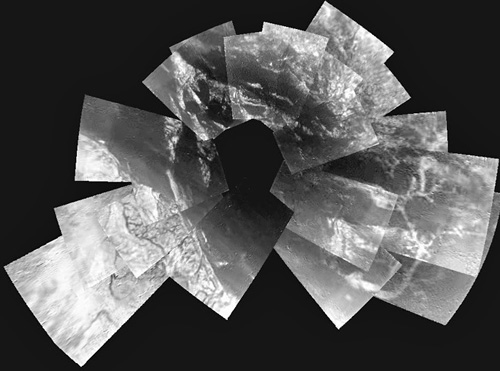As the Huygens probe plunged toward Saturn’s moon Titan January 14, few scientists expected earthbound observations to play much of a role. Yet a global network of radio telescopes had to step up big-time. Measurements of the winds blowing through the moon’s thick atmosphere — readings initially feared lost because of a communication error between Huygens and its mother ship, Cassini — were rescued by telescopes scattered across Australia, China, Japan, and the United States.
The Earth-based measurements saved the day for the Doppler Wind Experiment (DWE), the only one of Huygens’ six instruments seriously affected by the communication glitch. The problem arose because of a software error on Cassini — a switch was not set to “on” — caused when the European Space Agency sent improper instructions to NASA’s Jet Propulsion Laboratory.
DWE was designed to measure wind speeds in Titan’s atmosphere by analyzing the probe’s radio signal. Whenever the wind moved the probe toward or away from the receiver (either aboard Cassini or on Earth), it induced a Doppler shift that caused the signal’s frequency to change slightly.
“When we began working with our international partners on this project, we thought our telescopes would be adding to the wind data produced by the two spacecraft themselves,” says Fred Lo, director of the National Radio Astronomy Observatory (NRAO). “Now, with the ground-based telescopes providing the only information about Titan’s winds, we are extremely proud that our facilities made such a key contribution.”
NRAO’s Robert C. Byrd Green Bank Telescope (GBT), located in Green Bank, West Virginia, first detected Huygens’ signal that it was alive in Titan’s atmosphere. The 100-meter-by-110-meter GBT also observed the frequency shift caused by the sudden change in velocity when the spacecraft’s first parachute deployed.
“I’ve never felt such exhilarating highs and dispiriting lows than those experienced when we first detected the signal from the GBT, indicating ‘all’s well,’ and then discovering that we had no signal at the operations center, indicating ‘all’s lost,'” says Michael Bird of the University of Bonn, who leads the DWE team. “The truth, as we’ve now determined, lies somewhat closer to the former than the latter.”
In addition to measuring the frequency shifts in Huygens’ signal, radio telescopes on Earth pinpointed the probe’s position to within about two-thirds of a mile. By combining these two sets of measurements, scientists eventually will have a three-dimensional record of the probe’s motion throughout its descent to Titan’s surface.











